Start Here
Homepage Bottom Form
We will get back to you as soon as possible.
Please try again later.
Rebuild Smart: The Complete Homeowner’s Guide to Recovering and Rebuilding After a House Fire
🏠 Rebuild Smart: A Homeowner’s Fire Recovery Roadmap
Created by House Fire Solutions — Trusted Guidance for Rebuilding Stronger, Safer, and Smarter After a Fire
When you’ve survived a house fire, it’s not just your home that’s been damaged — it’s your sense of safety, stability, and control.
At House Fire Solutions, we understand how overwhelming recovery can feel — the paperwork, the decisions, the endless steps between loss and restoration.
That’s why we created this flagship guide:
Rebuild Smart — A Homeowner’s Fire Recovery Roadmap.
It walks you through every phase of recovery — from the first day after a fire to the moment you move back in — helping you rebuild with confidence, clarity, and protection.
🔹 Section 1: The First 72 Hours — What to Do Immediately After the Fire
The first few days after a fire are critical for both safety and insurance protection. This is your stabilization phase.
☐ Ensure your family and pets are safe and have secure temporary housing.
☐ Contact your
insurance company and open a claim immediately.
☐ Ask for your
claim number and assigned adjuster’s contact information.
☐ Request a
copy of your insurance policy (full version, not just the declarations page).
☐ Get a copy of the
official fire report from the local fire department.
☐ Secure the property — board up openings and fence off dangerous areas.
☐ Notify your
mortgage company or landlord.
☐ Document everything — take photos and videos of the damage before cleanup.
☐ Save receipts for hotels, food, clothes, and gas (these may be reimbursed).
☐ Contact local aid agencies (Red Cross, Salvation Army, or city relief programs).
💡 Pro Tip: Don’t sign any contracts or authorize restoration work until your insurance adjuster has inspected the damage.
🔹 Section 2: Navigating Insurance — How to Protect Your Rights and Get Paid What You Deserve
Your insurance claim is the backbone of your recovery. Handle it methodically and document everything.
☐ Keep a
Fire Recovery Binder or digital folder for all claim documents.
☐ Record every phone call and email with your adjuster — dates, names, and summaries.
☐ Review your
coverage limits, exclusions, and deductibles.
☐ Request written copies of your adjuster’s estimates.
☐ File your
Proof of Loss form accurately and on time.
☐ Ask about
Additional Living Expense (ALE) coverage to cover temporary housing.
☐ Track all
payments received, pending, or denied.
☐ Keep a record of
out-of-pocket expenses for reimbursement.
☐ Consider hiring a
licensed public adjuster if you disagree with your insurer’s offer.
☐ Store all digital files in the cloud for backup.
💡 Pro Tip: You are not required to accept the first settlement offer — request a detailed explanation of every deduction.
🔹 Section 3: Damage Assessment — Understanding What’s Salvageable and What’s Not
Once it’s safe to re-enter your home, the next step is understanding what can be saved and what must be replaced.
☐ Wait for clearance from the fire department before entering the property.
☐ Wear protective gear — gloves, masks, and boots.
☐ Separate items into three categories:
salvageable, questionable, destroyed.
☐ Take photos before discarding anything.
☐ Focus first on high-value items — appliances, furniture, jewelry, electronics.
☐ Inspect your
roof, walls, and foundation for structural damage.
☐ Have
HVAC systems and electrical wiring professionally inspected.
☐ Request a
smoke and soot assessment for air quality testing.
☐ Identify hidden damage — inside walls, insulation, or ductwork.
☐ Make a list of
all damaged personal items for your claim.
💡 Pro Tip: Smoke damage can be more destructive than flames — insist on professional testing for soot and air contamination.
🔹 Section 4: Choosing the Right Restoration Team
Choosing who rebuilds your home is one of the most important decisions you’ll make.
☐ Only hire licensed and insured fire restoration contractors.
☐ Ask for
IICRC or RIA certification (industry-standard fire restoration credentials).
☐ Get at least
3 written estimates before choosing a company.
☐ Review contracts carefully — watch for vague “authorization to proceed” language.
☐ Avoid signing
Assignment of Benefits (AOB) documents without legal advice.
☐ Confirm who will handle permits and inspections.
☐ Ensure timelines, payment schedules, and materials are listed in the contract.
☐ Verify local references and online reviews.
☐ Keep all project communications in writing.
☐ Request a
final lien waiver once payments are complete.
💡 Pro Tip: Never pay more than 20% upfront, and always retain 10% until the project passes final inspection.
🔹 Section 5: Rebuilding Smarter — Safer, Stronger, and More Efficient
This is your opportunity to rebuild with resilience — to make your home not just as it was, but better than before.
☐ Upgrade to
fire-resistant materials: roofing, siding, insulation, and windows.
☐ Install
hardwired smoke alarms and a sprinkler system if possible.
☐ Improve
ventilation and HVAC filtration to reduce smoke buildup risk.
☐ Elevate critical systems (electrical panels, HVAC) away from ground moisture.
☐ Ask your contractor about
energy-efficient upgrades — insulation, windows, and appliances.
☐ Add
surge protection and whole-home backup power.
☐ Seal attic and wall penetrations to prevent future fire spread.
☐ Upgrade your
landscaping with defensible space (fire-safe vegetation zones).
☐ Keep
spare materials for easy repair of future damage.
💡 Pro Tip: Investing in better materials now can save you from higher insurance premiums and future disasters.
🔹 Section 6: Financial & Legal Steps to Protect Yourself
The financial side of fire recovery can be complex — here’s how to stay ahead.
☐ Notify your mortgage company about the damage and claim.
☐ Ensure all insurance checks are
issued jointly to you and your mortgage company.
☐ Request written confirmation of how funds will be released.
☐ Consult a
construction or insurance attorney if disputes arise.
☐ Retain a
CPA or tax advisor — many fire-related expenses are tax-deductible.
☐ Keep all
receipts and invoices for tax and claim purposes.
☐ Don’t let contractors start work until you’ve confirmed insurance funding.
☐ Review all warranties and guarantees before signing off on final work.
💡 Pro Tip: Always keep your name on the checks — never sign your benefits over to anyone else.
🔹 Section 7: Emotional Recovery — Taking Care of Your Family
Recovery isn’t just about rebuilding walls — it’s about restoring peace of mind.
☐ Reach out to
mental health professionals specializing in trauma or disaster recovery.
☐ Help children process the experience through age-appropriate conversations.
☐ Lean on family, friends, and community resources for support.
☐ Take photos of your progress — it helps you see how far you’ve come.
☐ Join
fire survivor support groups online or locally.
☐ Keep a personal journal — recovery can be emotionally healing.
☐ Celebrate small milestones, like cleanup completion or move-in day.
💡 Pro Tip: Healing takes time — progress is progress, even when it’s slow.
🔹 Section 8: Prevention & Preparedness for the Future
Once you’ve rebuilt, your goal should be never to experience this again.
☐ Install
fireproof safes for important documents and keepsakes.
☐ Create an
Emergency Evacuation Plan with your family.
☐ Keep a digital copy of all insurance documents in cloud storage.
☐ Maintain
defensible landscaping around your property.
☐ Inspect smoke detectors and fire extinguishers every 6 months.
☐ Review your insurance coverage annually — update as your home improves.
☐ Keep emergency supplies (first aid, food, flashlights, chargers) ready.
☐ Join your local community’s
fire safety education program.
💡 Pro Tip: Rebuilding smart isn’t just about recovery — it’s about resilience.
🧱 Final Words: You’re Not Alone in This
Recovering from a house fire is one of the hardest challenges a homeowner can face — but with the right plan, support, and mindset, you can rebuild stronger than before.
House Fire Solutions exists to walk beside you every step of the way — connecting you with trusted professionals, providing transparent checklists, and empowering you to take back control of your recovery.
✅
Stay Organized.
✅
Ask Questions.
✅
Rebuild Smart.
💬 If you need help connecting with vetted local contractors, adjusters, or housing specialists, contact House Fire Solutions for free homeowner support.
Our Team Helps You Navigate Insurance, Restoration, and Rebuilding
It is a long established fact that a reader will be distracted by the readable content of a page when looking at its layout.
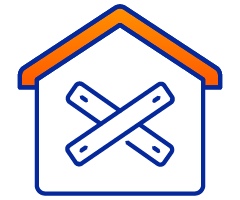
Board-Up
Our Network of Board Up Specialist Will Secure your property fast
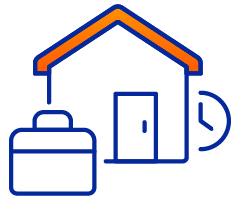
Temp Housing
We'll Help You Find Safe Shelter while you recover
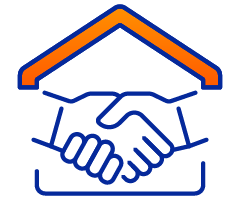
Public Adjusters
Our Network of Fire Damage Adjusters Will Fight Help for a fair insurance payout
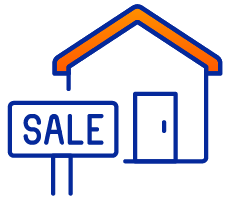
Investors
Our Partner Specializes in Buying Fire Damaged Homes So you Can Sell your home as-is

Content Cleaning
Restore what matters most
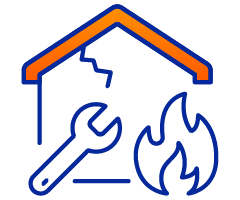
Restoration
Bring your home back to life
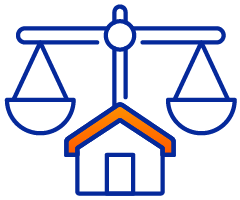
Attorneys
We have a network of Protect your rights and claims

Mental Health
Support for you and your family
Want To See If We Can Help You
If you'd like to speak with us today about purchasing Social Security, Personal Injury, Workers' Compensation or Employment Law Leads.
Homepage Bottom Form
We will get back to you as soon as possible.
Please try again later.